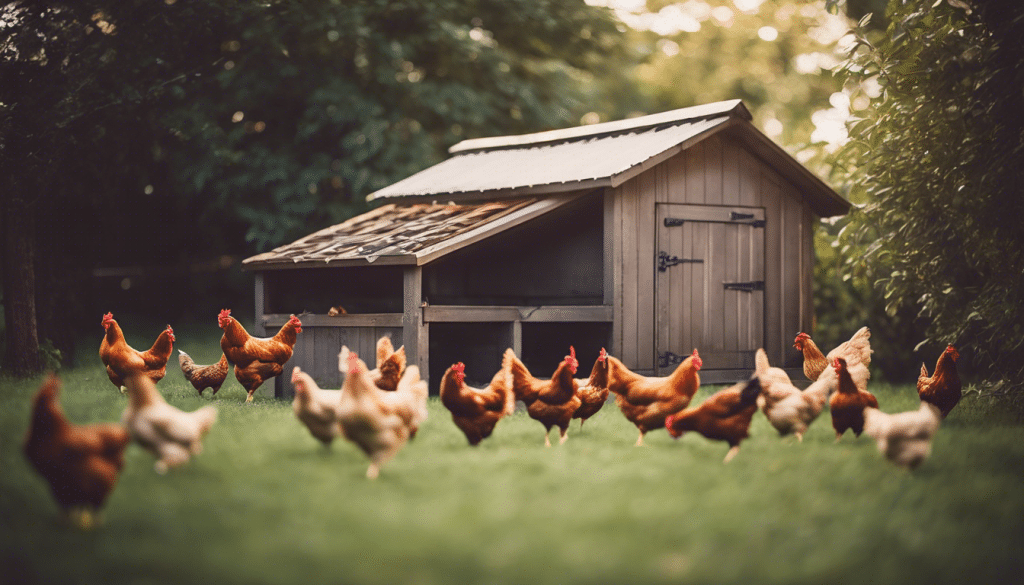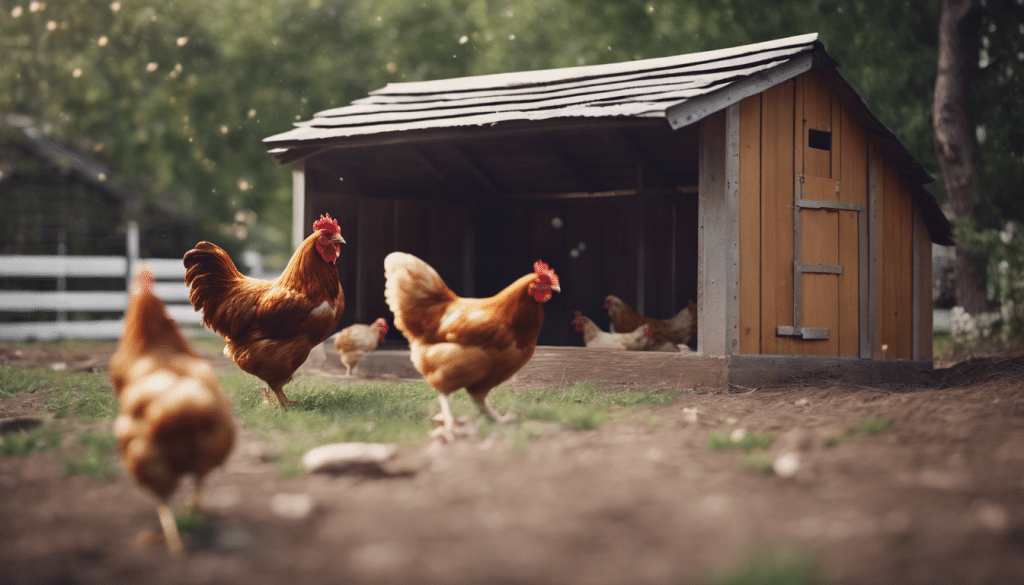Understanding Chicken Coop Capacity and Future Growth
Calculating the Right Size for Your Flock
When venturing into the world of poultry keeping, the first crucial step is calculating the chicken coop capacity. Not only does the coop need to house your current flock comfortably, but it should also accommodate future growth if you plan to expand. A common guideline suggests providing at least 2 to 3 square feet of coop space per chicken, but this can vary based on the breed and size of the birds. It’s also essential to factor in space for feeding stations, watering areas, and enough room for chickens to express their natural behaviors without constraint.
Planning for Expansion
Future growth considerations are integral when planning your chicken coop. If you’re looking to grow your flock over time, planning an expandable or modular coop can save you from future headaches. Look for designs that allow for easy additions such as extra nesting boxes or attachable runs. This foresight ensures that your coop can evolve alongside your ambition without needing a complete rebuild.
Ensuring Adequate Space for Nesting and Brooding
A vital component to coop capacity is adequate nesting space. Typically, one nesting box for every three to four hens is sufficient. These should be in a quiet corner of the coop to promote a stress-free laying environment. Additionally, if you’re looking to raise chicks, consider the space needed for a brooder. This space should be warm, protected, and separate from the main flock to ensure the safety and health of young chicks.
Integrating Effective Waste Management
Effective chicken waste management is a non-negotiable aspect of coop design. Adequate space should be allocated for waste collection to maintain hygiene and prevent the spread of disease. Include plans for removable trays or easy-clean surfaces. Also, consider the location of the coop for waste disposal and composting, which benefits gardeners by providing nutrient-rich fertilizer.
Adapting to Seasonal Changes
The capacity of your chicken coop also depends on seasonal variations. In colder climates, your chickens may require more indoor space as they are less likely to use an outdoor run in the winter. Conversely, hot summers might necessitate additional ventilation or shaded outdoor areas to prevent overheating. Keep these seasonal needs in mind when designing or choosing your coop to provide a comfortable year-round habitat for your flock.
Choosing Quality Over Quantity
Lastly, when considering coop capacity and expansion, always prioritize quality over quantity. A well-built coop that protects against predators and withstands the elements is a sound investment. Ensuring your feathered friends are safe and comfortable ultimately leads to a happier, more productive flock. Opt for durable materials and thoughtful features over cutting corners to save on initial costs, as this will pay off in the long term with a sturdy, adaptable coop that meets the needs of your growing flock.
By understanding and planning for chicken coop capacity and future growth, you ensure a thriving and efficient poultry keeping experience. Keep these considerations in mind as you start or grow your backyard flock, and your chickens will thank you for the effort with a steady supply of fresh eggs and companionship.
Design Elements for Scalable Coop Infrastructure

Optimizing Space and Comfort
A scalable chicken coop should be designed with both current and future needs in mind. To begin, consider the space required for each bird – generally, 2-3 square feet inside the coop and 8-10 square feet in the run. For expansion, ensure your design allows for additional square footage, nesting boxes, or even the possibility of adding another level or an adjacent run. Adequate space not only promotes chicken health and well-being but also prevents conflicts and ensures that chickens have room to develop natural behaviors.
Modular Components for Easy Expansion
As your flock grows, so should your coop. Utilizing modular components allows for a simple and cost-effective way to expand. This could include adding extra panels to increase the run’s size or incorporating additional nesting boxes that can be easily installed. These components should be standardized in size and fitting, providing a practical method for adjusting the coop’s capacity while maintaining structural integrity.
Access Points for Easy Maintenance
A scalable infrastructure must have multiple access points to facilitate easy cleaning and maintenance. These may include doors large enough for a person to enter, removable trays for waste management, and access to all parts of the coop for replenishment of food and water. Ensure that your design has these maintenance-friendly features that can still function efficiently as the coop size increases.
Ventilation and Insulation for Diverse Climates
Chickens are sensitive to temperature changes, thus ventilation and insulation are key for a coop that adapts to various climates. Design the coop with adjustable vents that offer proper airflow, and consider insulated walls for colder regions. These design elements are essential for maintaining a stable environment as your flock grows and coop size expands.
Protective Features for Predators and Pests
While making the coop scalable, do not overlook the importance of protection. Strong, durable materials are a must, with reinforced fencing and mesh to ward off predators. Consider raised coop designs to prevent pests and consider the coop’s lock system – making sure it remains secure and efficient with every expansion.
Waste Management Systems
Effective waste management systems are essential for cleanliness and scalability. Scale-friendly coops feature designs that simplify manure collection and disposal —for example, floors with a slight slope towards a collection point. Implement composting methods that fit your expanding setup, ensuring the coop remains hygienic and odor-free.
Adaptable Lighting Arrangements
Lastly, as your chicken coop infrastructure grows, so should your lighting system. Essential for egg production and bird health, install an electrical system that allows for additional lighting fixtures. Solar options can be particularly beneficial, providing a sustainable and scalable light source that can adapt to your coop’s changing dimensions.
Remember, a well-designed coop is not only a foundation for a thriving flock but also a testament to efficient and sustainable farm practices. Implementing these design elements ensures your coop can grow alongside your feathered family, catering to their needs every step of the way.
Implementing Effective Space Management Practices

Optimizing Interior Layout
Creating an efficient interior layout is paramount in a chicken coop. To ensure your flock thrives in a harmonious space, start by allocating distinct areas for roosting, feeding, and egg-laying. Utilize vertical space by installing roost bars at different heights, as chickens have a natural instinct to roost high up. Careful consideration of feeder and waterer placement can dramatically reduce waste and keep the coop tidier, promoting a healthier environment for your chickens.
Managing Flock Size and Coop Dimensions
The size of your flock directly influences the amount of space needed in your coop. As a rule of thumb, each chicken requires between 2 to 3 square feet of coop floor area. However, do not overlook outdoor run space, where chickens can forage and roam freely. For optimal space management, balance your flock size with the total available space, ensuring ample room for all your birds to live comfortably without overcrowding.
Implementing Efficient Waste Management
Effective waste management plays a critical role in maintaining a clean and healthy chicken coop. Consider installing a deep litter system or a droppings board beneath roosting areas for easy cleaning. Additionally, regular coop cleaning schedules should be adhered to, with soiled bedding replaced and nesting boxes kept tidy to minimize the spread of parasites and diseases. Composting chicken waste can turn it into a valuable resource for the garden, closing the loop in your backyard ecosystem.
Incorporating Nesting Boxes and Brooder Areas
Nesting boxes are a must-have for egg-laying chickens, and allocating space for them is essential. One box per four to five hens is typically sufficient. Position them in a quiet corner of the coop to offer privacy and encourage laying. If you plan to breed chickens or raise chicks, designate a separate brooder area with a heat source and ample space for the young to grow without disturbing the rest of the flock.
Utilizing Modular and Multi-Functional Designs
Space management can be greatly enhanced by incorporating modular chicken coops or fixtures that can be adapted as your flock’s needs change. Consider using furniture with dual purposes, such as nesting boxes that double as roosting spots or feeders that can be converted into brooding areas. This flexibility allows you to make the most of your coop’s footprint while catering to the dynamic nature of chicken care.
Ensuring Ventilation Without Compromising Space
Proper ventilation is crucial for poultry health, but this doesn’t mean sacrificing space. Integrated vent and window designs can ensure adequate airflow to prevent moisture buildup and maintain a comfortable climate within the coop. Place vents near the roof to allow hot air to escape and add adjustable windows to create cross-ventilation, especially important during the hotter months.
Maximizing Outdoor Spaces for Foraging and Exercise
While the coop itself is vital, providing an enclosed outdoor run gives chickens the opportunity for natural behaviors such as foraging, which is essential for their mental and physical well-being. An ideal run will have enough space for dust baths, shade for hot days, and protection from predators. Even in limited space, creative solutions like vertical gardens or stacking systems can enrich your chickens’ outdoor experience.
When it comes to raising chickens successfully, implementing effective space management practices is crucial. By considering your chickens’ behavioral patterns and physical needs, and then designing your coop accordingly, you ensure a happy, productive flock. Remember that each element of coop design should serve multiple purposes whenever possible, providing robust utility while maximizing space. The investment in good design and management will pay dividends in the health and happiness of your chickens, and the quality of eggs they provide.






